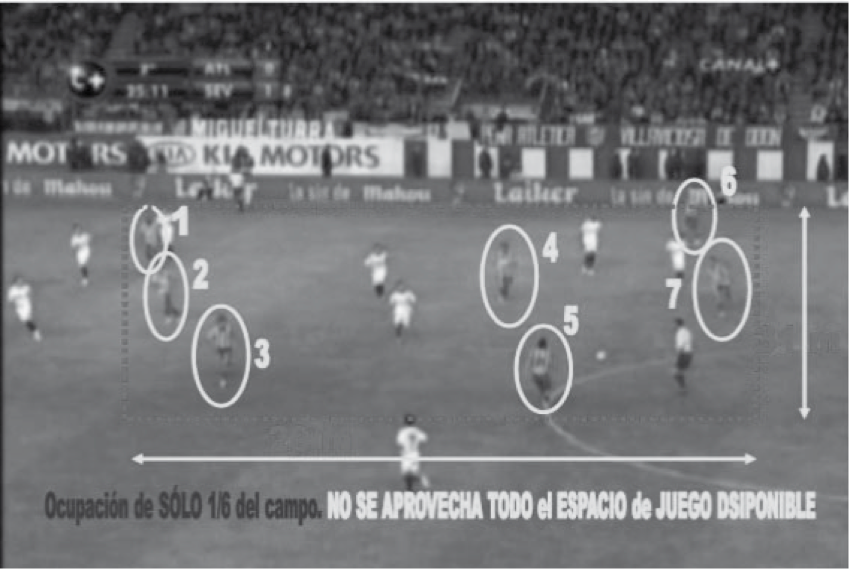LEVEL-B of play:
We associate this level of play with the team that is observed in their game:
- The manifestation of a DIRECT LONG/DEEP GAME without any control (when it can be played in a controlled way):
Characteristics of this manifestation:
- There are no players in the reception area or the appropriate arrangement for this style of play.
- It is even played long without the opponent making an intense pressure on the possessor (especially on the defensive line or the goalkeeper) that forces them to make this shot without any control.
- Possession of the ball is not guaranteed.
We highlight three aspects:
- With the game long we can not:
- Improve the success rate of the competition units.
- Guarantee the achievement of the objective, since the opposition:
- You can foresee the game situation.
- It has a manifest numerical superiority.
- It can train an effective opposition.
- Direct displacement – long play – was neither forced nor necessary.
- Even if with the short game the objective is not achieved, with this style we can constantly improve without limit in time.
On the other hand, in the long style of play once the launches and the dynamics of strategy have been systematized and concretized, and the specialists for each of the tasks have been determined, the coach can no longer influence the increase in the effectiveness of his team.
Despite all this, we must use the long/direct style of play as a strategic resource in the following cases:
- When the opposite, through a defensive collective action, eliminates the playing spaces of our starting zone.
- When the opposite eliminates the play spaces only from our progression zone, it is more advisable to use the style of play from short to long.
- The manifestation of a "CROWDED" GAME in an area / demarcation of the field of play without occupying the playing spaces in a structured way.
This manifestation provokes:
- An extreme absence of spaces in the area of the possessor.
- The impossibility of finding pass lines.
- The incorrect manifestation of 2:1 situations (aspect necessary to overcome the opposite in numerical superiority).
- The impossibility of looking for other solutions through changes of orientation, triangulations (not all the available spaces are occupied)...
- Poor level of execution (technical actions, manifestation of "fear" of contact, ...)
- Facilitate the defensive action of the opponent by reducing/eliminating our own team play spaces.

*In practically a "demarcation" of the game, 7 attacking players and their corresponding markers are accumulated.

